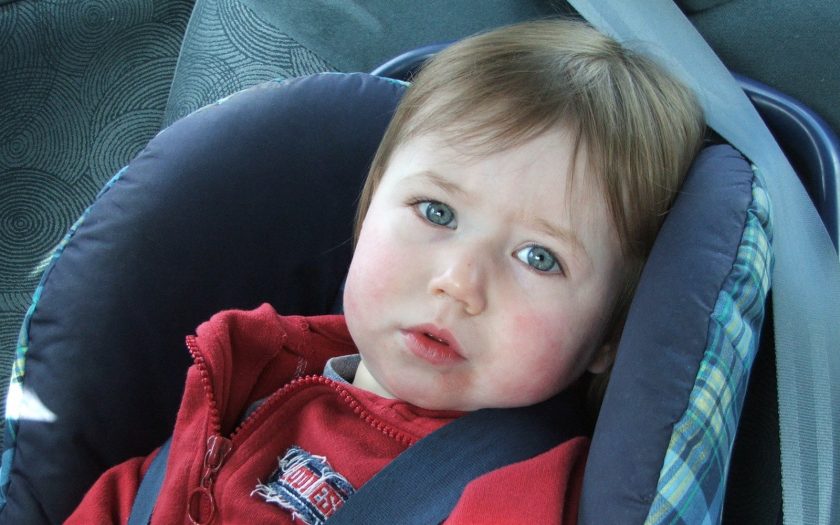Reader Enquiry:
“My daughter and son-in-law currently own a Skoda Superb. They have twins under two years and another child aged four. Here’s their problem: they can’t fit two child seats plus a bolster seat in the rear seat. They have ascertained that they could buy a 2016 Holden Commodore and fit the child seats in the rear, or a late model Ford Territory, but what new cars would be suitable? And do any new cars have three ISOFIX fittings in the rear seat to allow the installation of three child seats?” WS
seniordriveraus.com asked almost every car company for a response and identified just FOUR vehicles (Isuzu MU-X, Land Rover Discovery, Peugeot 5008 and Citroen Grand Picasso) currently on sale in Australia that offer ISOFIX fittings for three child seats in the second row.
THANKS FOR your enquiry. Many parents face a similar dilemma and having to sell the current car and buy a new one just to accommodate three child seats is a daunting prospect.
While most cars offer plenty of top tethers, not many have the much safer ISOFIX fittings for more than two child seats, and that’s a dilemma if you need to accommodate three children in car seats. ISOFIX fittings are part of the car’s structure, so child seats attached using them are inherently more secure. In addition, correct fitting of baby car seats or child car seats carries a much lower risk of incorrect fitting than seats using seat belts (recent research indicates that 94 percent of users fit ISOFIX seats correctly). Another benefit, especially if you are regularly installing and removing child seats – as many grandparents find themselves doing – is that it takes much less time.
The top tether prevents the child seat from tilting or rotating in an impact. Top tethers are not compulsory in Europe or North America.
Some ISOFIX seats can not be fitted using a seat belt and not all cars (especially older models) have ISOFIX car seat fittings. Unfortunately, ISOFIX car seats are usually more expensive than belt-based seats, and because Australia insisted on top tethers, many overseas ISOFIX seats do not comply with Australian rules. This top tether requirement for Australia caused a significant delay in ISOFIX becoming standard in Australia. The first ISOFIX system was released in 1997 and most European cars later than 2001 have ISOFIX installed. Australia didn’t follow suit until 2015.
We passed your problem on to the car companies and asked for a response. Most of them responded, some in more detail than others.
LEXUS: Nick Raman at Lexus sent the enquiry through to his technical people who came back with, “Our vehicles have ISOFIX anchorage points in the second row and four points (on those models with two seat capacity). Our RX L (seven-seat RX) has enough top tether points for four child seats. It has one in the third row but doesn’t have ISOFIX points in the third row.”
JEEP: Tracie Stoltenburg told us that there are no Jeep seven-seaters. However, “All Jeep vehicles fitted with three seating positions in the 2nd row have three top tether child restraint anchorage points as mandated by ADR34/02. As with most new vehicles sold on the market today, only two lower ISOFIX anchorages (are) installed. These are installed in the outboard seating positions. The centre seating position does not have centre ISOFIX lower anchorages due to space. A child restraint seat can be installed in the 2nd row centre position using the top tether child restraint anchorage together with the seatbelt as permitted under ADR34/02.”
RENAULT: Elena Woods made the same point as FCA’s Tracie Stoltenburg that all new vehicles imported into Australia are required to have the same number of top tethers in the second row as they have seatbelts. “So each of Renault’s passenger and SUV vehicles have three top tethers in the rear and two ISOFIX fittings. With regard to fitting three seats across the rear, it will depend on the size of the seats and the style of the booster seats. ISOFIX car seats can also be used like conventional car seats, so you can use a third one in that way if space is of the essence. Also, ISOFIX is not available in high-shoulder booster seats.”
KIA: Kevin Hepworth from Kia suggested that he didn’t know of any car that has three ISOFIX points across the back seat (and to be fair, he would only be familiar with Kia models). He added, “By their nature they are wider than the earlier seat-belt locked boosters. In the three-row Kias there is an ISOFIX at the outer seats of the second row and one on the outboard side of the third row.”
NISSAN: Tony Mee confirmed that there are two ISOFIX points in Nissan Juke, Qashqai, X-Trail, patrol and Navara Duel Cab second row “with further tether points also included, plus a further tether/anchorage point in the third row of the Patrol and Pathfinder. (Whether three child seats fit) is really up to the dimensions of the vehicles and the seats.”
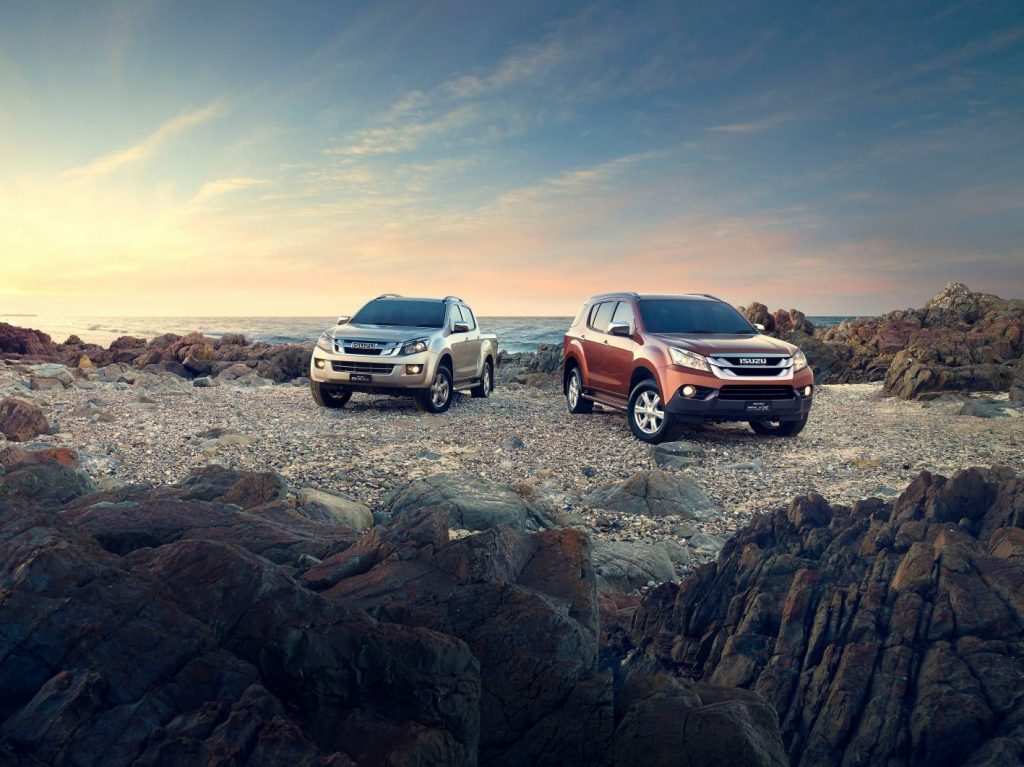
ISUZU: Mark Harman came back to us with information on the MU-X. “The Isuzu MU-X is equipped with enough space to comfortably fit three regular-sized children seas across the 2nd row. The 2nd row has ISOFIX mounting points across the entire row: two points for the driver’s side seat, two points for the centre seat (the passenger side mount is a larger double mount) and one mount point for the passenger side seat (would use the double ISOFIX mount from the centre set). There are no ISOFIX mounting point across the 3rd row but it is possible to tether a child seat across the 3rd row should the need arise.” We went back to Mark for clarification (there has been some confusion about whether “three mounting points” means fittings for three seats). He confirmed that the MU-X does indeed have proper ISOFIX fittings to fit three child seats in the second row. The MU-X starts from $42,900 plus on road costs.
VOLVO: With Volvo’s well-deserved reputation for safety, we were interested to hear Greg Bosnich’s response to our enquiry. “I don’t think there are many vehicles with three ISOFIX (fittings) across the back, and even less with ISOFIX on the 3rd row.” He directed us to the ANCAP website which has a chart showing ISOFIX point locations for a tested vehicle (Greg points out it isn’t a Volvo). “The main issue is the space required for three seats – because all the seats are different sizes, you can’t advise which car can take three. Obviously, the bigger the car, the more chance you have, but even with large cars the height of the child seat comes into play with clearance to the roof and side curtain (airbags), access to seat belt buckles covered by the child seat.”
MAHINDRA: The new Mahindra models mean they will be increasingly considered by families, so we sent the same enquiry to James Halliwell. “The current model Xuv500 and Pikup both have two ISOFIX child seat mounting points in the 2nd row only.”
TOYOTA: “Currently there is no Toyota vehicle with three ISOFIX positions, however a number of Toyota vehicles have three ELR (Emergency Locking Retractor) seatbelts in place of ISOFIX to mount child seats. Our vehicles with ISOFIX have the ISOFIX fittings in the second row only. The applicability of ISOFIX/CRA per car is listed within the individual model line materials in each owner’s manual.”
MITSUBISHI: Karl Gehling at Mitsubishi came back to us with plenty of information, and then expanded on that when we sat down with him later. “All of our vehicles have two outboard ISOFIX mounts in the rear seats. However, I do know of some people movers – (VW) Multivan being one – that have four ISOFIX mounts, two in each of the rear rows.” In a later conversation, he suggested that there are child seats available that have been designed with narrow bases precisely so they can fit three across the rear seat.
SUBARU: Subaru’s response was brief, and to the point. “We have two ISOFIX positions (i.e. not the centre rear seat).” Subaru does not have any seven-seater vehicles in its range, and none with a third row of seats.
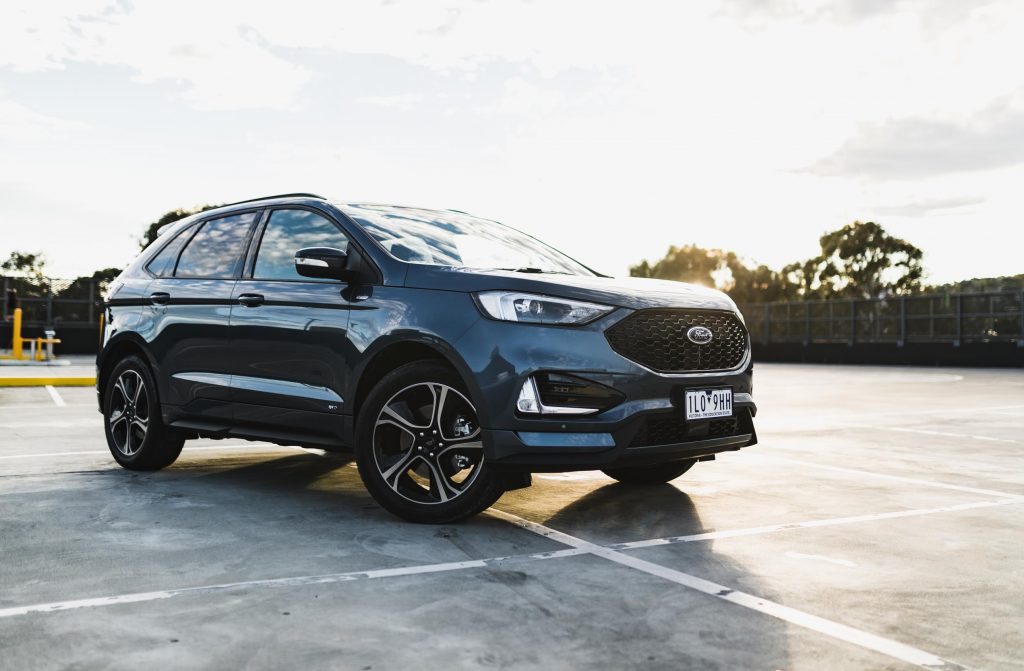
FORD: Damion Smy came back with some specific model recommendations from the Ford range that he suggests could do the job. “The new Endura … offers an expansive second row that can accommodate three baby seats. Endura offers three child restraint top tether anchorages, one for each seating position. It also offers outermost rear second-row seats (with ISOFIX fittings), where the cushion and the backrest meet. For a seven-seat solution, we offer the Everest in all three trim levels (Ambiente, Trend and Titanium) as well as rear-wheel drive and four-wheel drive models. Everest can accommodate up to five baby seats. There are three top-tether child seat anchorage points in the second row of the Everest, with an additional two top-tether child seat anchorage points in the third-row seats. These work in conjunction with two ISOFIX tether points located on the outermost second row seats. The curtain airbags in the Everest extend to include both the second and third rows on both sides of the vehicle.”
MAZDA: The response from Mazda was short and to the point, too. “Our CX-8 and CX-9 have two ISOFIX anchor points in the middle row.”
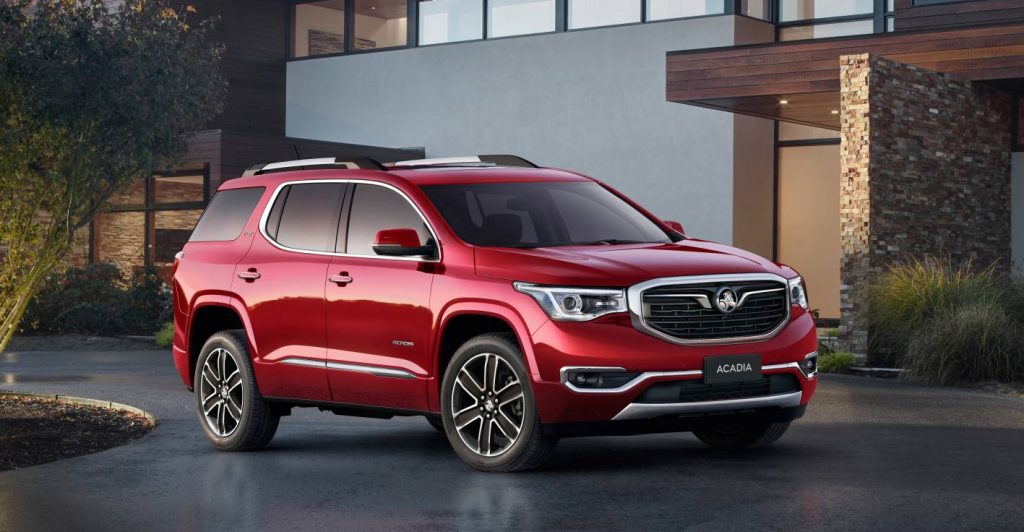
HOLDEN: Like Ford, Holden took the opportunity to recommend one of their models, the Acadia. “With seven airbags, including full length side curtain airbags in all three rows, the Acadia delivers on safety for the entire family. Plus, there’s two ISOFIX anchorage points in the second row, as well as five child restraint anchorage points for all rear seats.” One interesting point with the Acadia (and worth remembering if you want a seven-seater) is “Smart-Slide” seats that make climbing in through the boot a thing of the past, “even with a child seat fitted in the second row.”
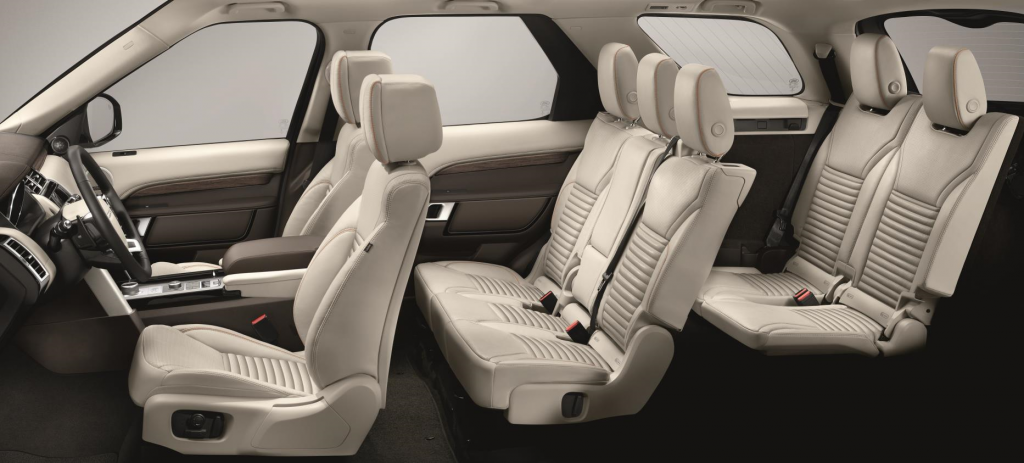
LAND ROVER: It was reassuring to learn that the new Land Rover Discovery has five ISOFIX fittings, three in the second row and two in the third row when seven-seats are optioned. the capacity to accommodate five child seats is, from our enquiries, unique on the Australian market and highly commendable. James Scrimshaw from JLR pointed out that all other JLR products have two ISOFIX fixings in the outboard second row seats. Discovery prices start from $71,360 plus on road costs. although the seven-seat option adds $2100, making it a very affordable and sensible choice. Air conditioning for the third row seats is also an extra and well worth optioning if you live in one of the warmer states.
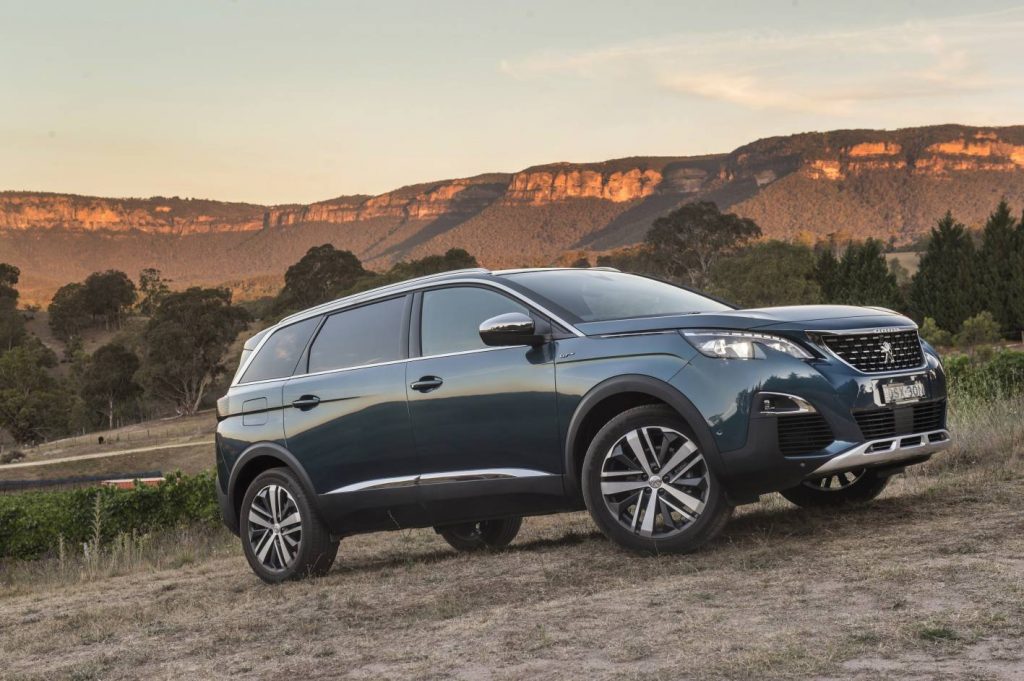
PEUGEOT: Peugeot is another company that can offer a vehicle with ISOFIX installations in the second row for three child seats. Tyson Bowen tells us that the 5008 has fittings for three seats, and that three child seats, in any combination of ISOFIX or non-ISOFIX, can be installed across the second row. The Peugeot 5008 range starts from $44,490 plus on road costs.
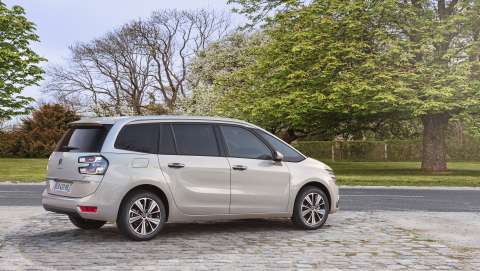
CITROEN: Our final contender for vehicles that can accommodate three ISOFIX-fitted child seats across the second row is the Citroen Grand Picasso. As with the Peugeot 5008, three child seats, ISOFIX or non-ISOFIX, are catered for in this superbly capable people mover. Prices for the Citroen Grand Picasso range start from $38,490 plus on road costs.
HYUNDAI: “All of our cars offer ISOFIX but only on the outboard 2nd row (no middle seat or third row). Some brands/models do have ISOFIX in the third row but it is a very small list of cars,” Hyundai’s Guido Schenken told us. He then went on to add that, from his personal experience, it is possible to fit two child seats plus a booster seat in the second row of the Tucson SUV because his sister had done just that. She also fitted booster seats (of a non-ISOFIX design) in the third row of a Hyundai Santa Fe SUV.
SUZUKI: Suzuki doesn’t currently have a seven-seater in its line-up but Michael Pachota told us, “Our vehicles come equipped with two ISOFIX and three tether anchorages which allow for two baby seats plus one booster seat.”
HONDA: “None of our vehicles have three ISOFIX fittings in the back seat. However, you can fit four child seats in the 2nd and 3rd row of the Honda Odyssey VTi-L (using) the anchorage points.”
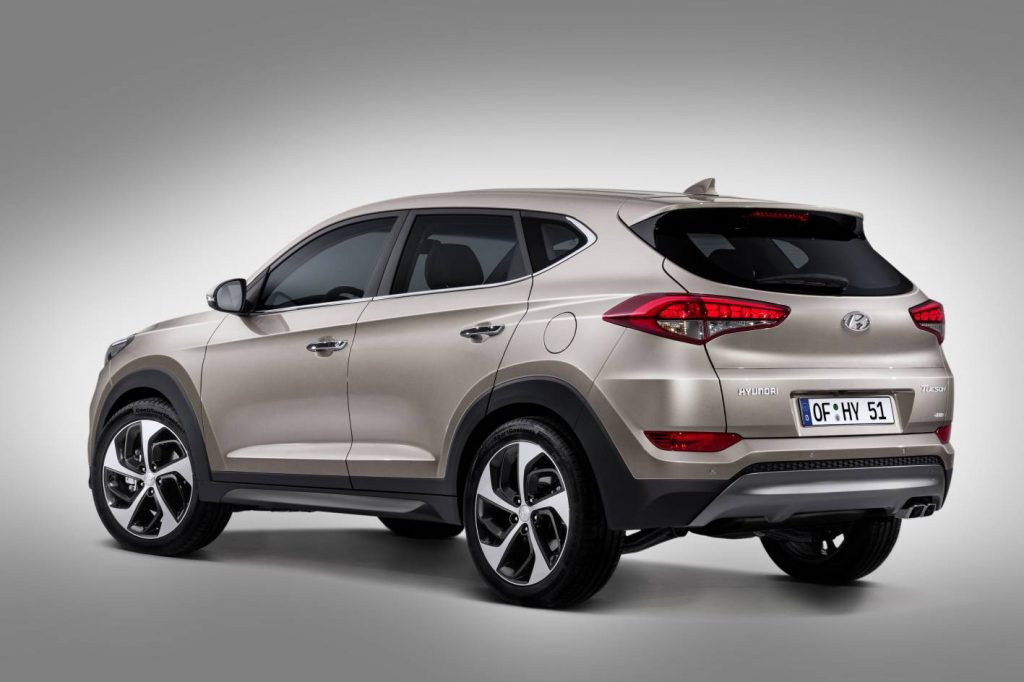
MERCEDES-BENZ: Ryan Lewis from Mercedes-Benz apologised that his resident “data boffin” had been on annual leave, explaining the delay in getting back to us. The results of his search are that the GLE (and this applies to other models in the Benz range) have two ISOFIX mounting points for the outer seats in the second row, plus additional top tethers. ISOFIX is not available in the third row.
So, we have to admit, it’s still pretty much a case of trial and error, and seeking out child seats with a sufficiently narrow width to allow three in the back seat. It would appear that the only cars currently on sale in Australia with three ISOFIX installations in the second row (unless one of our non-responding car companies offers anything) are the Land Rover Discovery, Isuzu MU-X, Peugeot 5008 and Citroen Grand Picasso. Notwithstanding, we’d still recommend buying a new car over a 2016 Ford Territory or Holden Commodore because even in the past few years, safety equipment has improved vastly, and there’s no more valuable cargo than your family.
The absence of second row ISOFIX fittings for three child seats on the majority of cars sold in Australia is of concern because a study published in Pediatrics showed that, for children from newborn to three years old, sitting in the centre rear seat is 43 percent safer than sitting in the outboard rear seat position.
As we said, we emailed virtually every car company asking for their response to a genuine reader question. We also waded through turgid text of the relevant ADR (34/02). All the responses we received are above, in the order in which they were received (at last count, seven car companies didn’t care to respond to our enquiry – should any of them come back to us, we’ll update our story). Which brings up an interesting thought: if a car company can’t be bothered to answer a question from a motoring journalist on behalf of a reader, what chance does an everyday consumer have?
